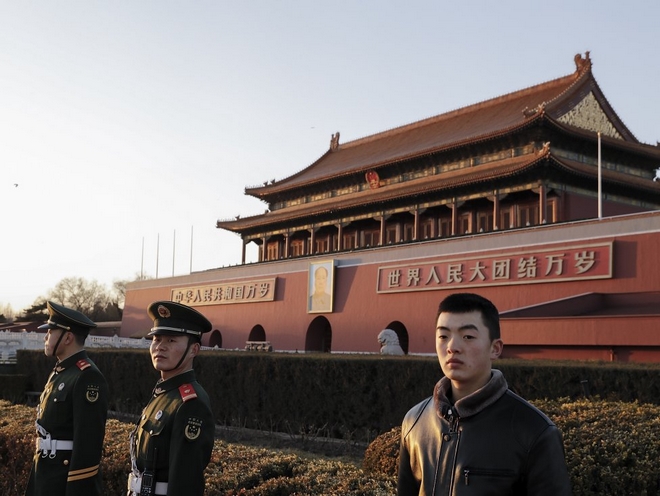
Armed policemen patrol for annual sessions of the National People's Congress (NPC) and the Chinese People's Political Consultative Conference (CPPCC) at Tiananmen Square on March 1, 2017, in
China's fresh macro-economic measures and growth target will be announced at the upcoming annual sessions of the National People's Congress (NPC) and the Chinese People's Political Consultative Conference (CPPCC), as the country's economy has entered a phase of "new normal".
Adapting to 'new normal'
After several decades of high-speed growth, China has deprecated its current environmentally hazardous growth model that is based on incentive programs, government intervention and resource consumption. It indicates that Beijing will no longer overemphasize growth speed as its economy is seeing medium to high-speed growth and suffering from the pains of structural adjustment.
Last year, the Chinese government cut the economic growth target to 6.5-7 percent from the 7 percent of 2015. In 2014, the economic growth target was 7.5 percent. The changes reflect the current leadership's determination to build an economy driven by innovation and efficiency enhancement.
Meanwhile, the Chinese government has not set a specific foreign trade growth target for 2017. "It means that (we should) become less enthusiastic about the growth speed in the face of uncertainties in the global economy that we cannot control. So, (we should) take it objectively," Li Gang, vice president of the Chinese Academy of International Trade and Economic Cooperation under the Ministry of Commerce, said.
Therefore, it is predictable that the economic growth target for 2017 will be based on the needs of adapting to the "new normal", building a well-off society by 2020 and boosting employment.
Implementing supply-side structural reforms
The year 2017 is a crucial year for China to push forward with the supply-side structural reform, a remedy offered by President Xi Jinping to revitalize China's slowing economy and cut overcapacity.
In order to achieve the goals, the Chinese government will continue to cut overcapacity specially in the steel industry, reduce massive property inventories in the third and fourth-tier cities and cut taxes and transaction costs.
Furthermore, the Chinese government will step up its efforts to streamline administration and decentralize power to balance relations with the market.
'Seeking progress while maintaining stability'
At a central economic work conference held in mid-December, Chinese leaders set the tone for economic development in 2017, and for the first time upgraded "seeking progress while maintaining stability" as a major principle for governance.
In order to maintain the stability, the Chinese government should carry out more proactive fiscal policy to allow more tax breaks and government investment. A neutral monetary policy is needed to curb asset bubbles while avoiding liquidity risks. What's more, the Chinese government should continue to increase job opportunities, further implement social security and healthcare reforms, and enhance educational equity.
| Touched | Sympathetic | Bored | Angry | Amused | Sad | Happy | No comment |